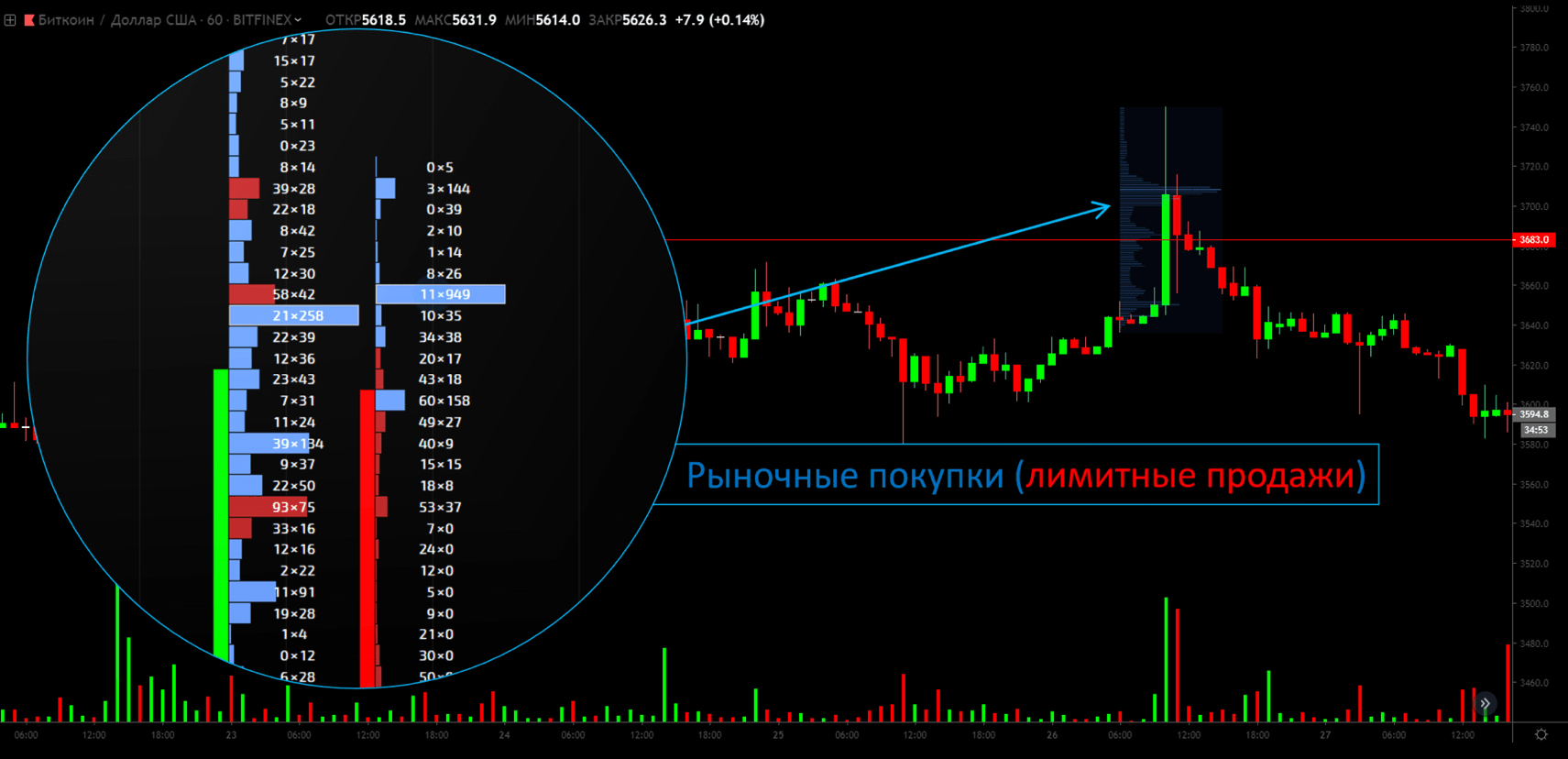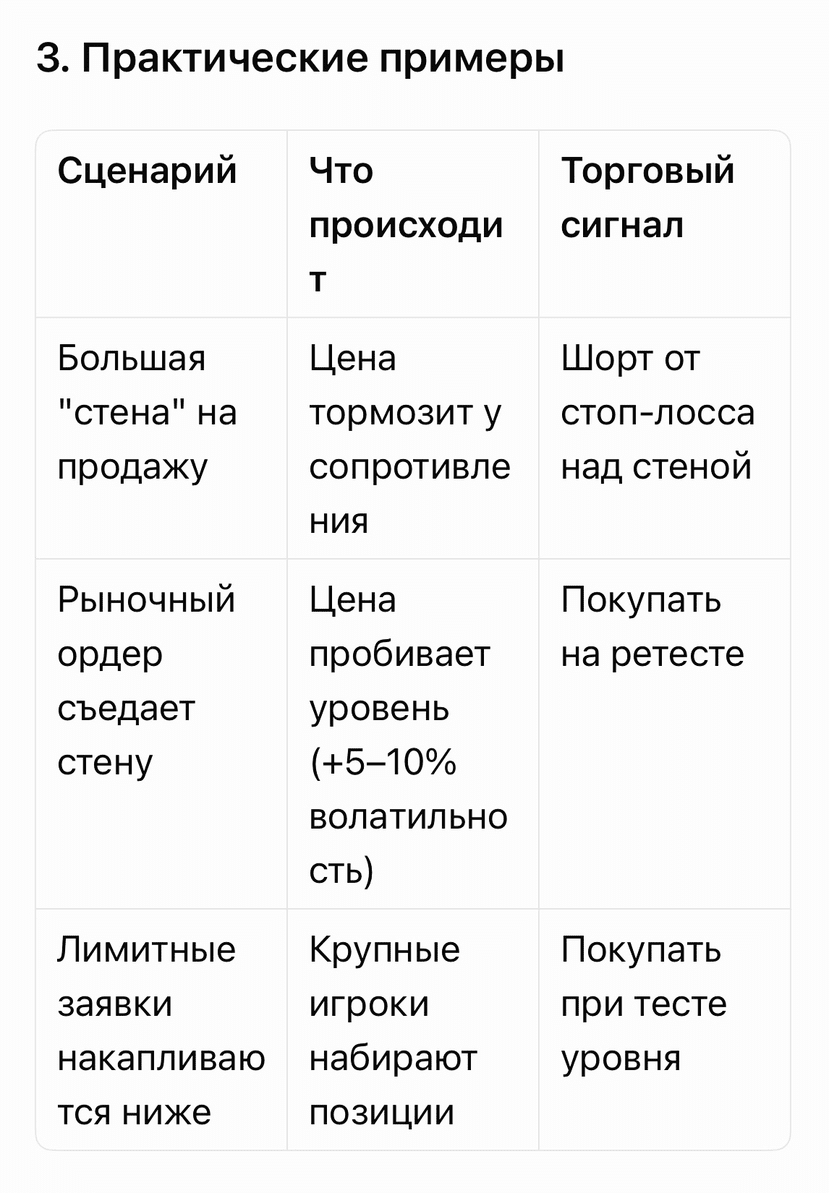To detect price movement through the analysis of market and limit orders, you need to monitor the order book (Order Book) and time and sales (Time & Sales). Here are the key principles:
1. How orders work
- Market orders
They are executed immediately at the current price, "eating" liquidity from the order book.
Example: A buyer places a market order → the price sharply rises if there are few sellers.
- Limit orders
They leave a "mark" in the order book, forming support/resistance levels.
Example: A large limit order to buy at $100 → the price will slow down its fall at this level.
2. How to detect movement: 4 methods
(1) Order book analysis (Level 2)
- Accumulation of limit orders at one level → strong support/resistance zone.
Example: 500 BTC to buy at $115,000 → the price will "bounce" off this zone.
- Disappearance of a large order → signal of a change in direction (the player canceled the order).
(2) Cluster charts (Volume Profile)
- Shows where limit orders are concentrated:
- POC (Point of Control) — level with maximum volume → magnet for price.
- Volume gaps — zones with a minimum of orders → the price quickly passes through them.
Example of a cluster chart for BTC.

(3) Time & Sales (Tape of trades)
- Large market orders are visible as large candles on the chart:
- Green volume > 100 BTC → signal of aggressive buying.
- Red volume > 100 BTC → signal of sell-offs.
- Order combinations:
A series of small limit orders + a large market order = manipulation ("stop hunt").
(4) Liquidity depth
- "Walls" in the order book:
- Sell order for 1000 BTC at $117,000 → the price will not break through without news.
- If a wall suddenly disappears → a sharp jump may occur.

4. Tools for analysis
- TradingView: Scripts for the order book (for example, `Order Flow Analytics`).
- CoinGlass: Aggregator of cryptocurrency exchange liquidity.
- Bookmap: Real-time order visualization.
- Indicators:
- `Cumulative Delta` (balance of market orders).
- `Volume Profile Visible Range`.
Key rule
> Price moves to where there is less liquidity. Market orders "break through" weak levels, while limit orders create reversal zones. Monitor the order book at key prices ($118K for BTC, $4K for ETH) — these are decision-making points.
For the cryptocurrency market, it is especially important to monitor CEX exchanges (Binance, Bybit), where 70% of liquidity is concentrated. Data from DEX (Uniswap) is useful for altcoins but less relevant for BTC/ETH.